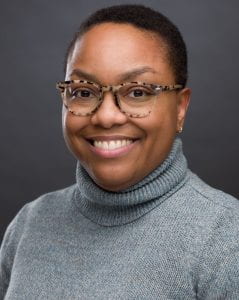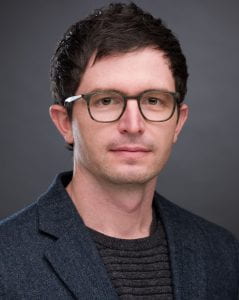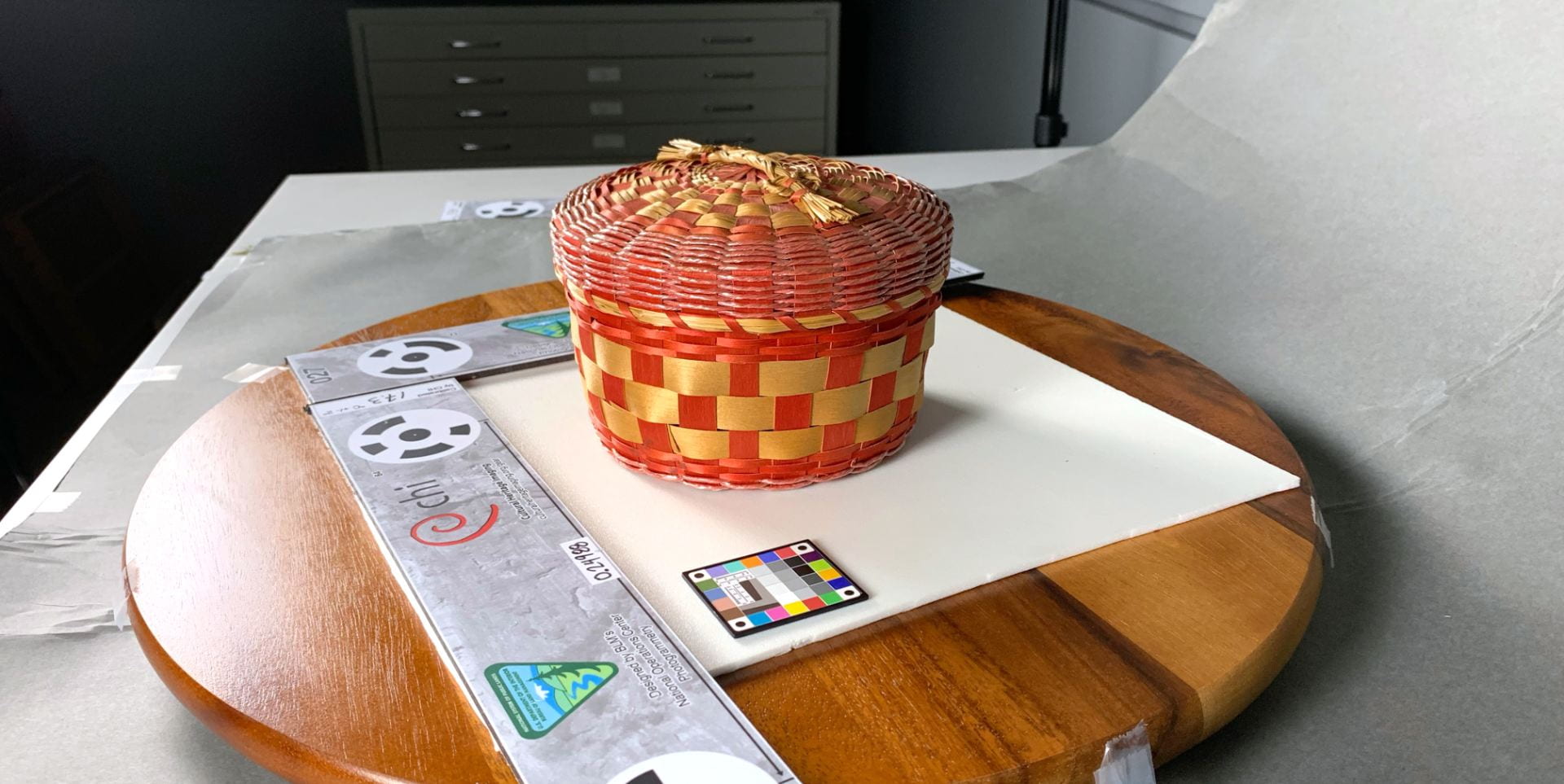The Advancing Pathways grant is a distinctive project developing new synergies between the Hood Museum of Art and Dartmouth College Library. The grant sets a trajectory for long-term partnership through shared governance, linked technological infrastructure, and the creation of innovative pedagogical tools and practices. The project’s focal point centers around Dartmouth’s Native American and Indigenous Arctic collections, bringing together students, faculty, and members from Native American and Indigenous communities to help inform and develop culturally relevant practices. As a part of this work, Cultural Heritage and Indigenous Knowledges fellow Zachary Miller and Cultural Heritage Technical Developer Richel Cuyler have been engaged in research focused on the 3D scanning of Dartmouth’s cultural heritage collections using a technique called photogrammetry.

What is photogrammetry? In short, Photogrammetry is a method of using two-dimensional photography to create a three-dimensional model of an object in virtual space (see model below). By capturing every angle of an object with hundreds of photos, Zachary and Richel use a software called Agisoft Metashape to reconstruct an interactable virtual object in high detail. They aim to determine the limits of interoperability between specialized software platforms, as well as gauge file format sustainability, create metadata standards, and explore 3D annotation storytelling possibilities. Most importantly, the motivation for this branch of research includes deeper engagement with Indigenous communities represented in Dartmouth’s collections, who we want to honor as active participants in our overall work. These models have the potential to open conversations related to physical and digital repatriation, preservation of fragile cultural heritage, virtual educational exhibitions, and to increase accessibility to collections for students, researchers, and stakeholders at a distance.
This 20th century basket (above) by Abenaki artist Sophie Nolette Salvas (Wawanolett) (1911–2007) is made of wood splints, sweetgrass, cellophane cord, and red dye. Mrs. Wawanolett is from the St. Francis Abenaki community at Odanak outside of Quebec in Canada, and her work was acquired as a result of the anthropologist Gordon Day’s travels to their community in the 1960’s. The Gordon Day collection is held at the Rauner special collections library and is one of several connected Indigenous-related collections held between the Library and Museum. The Gordon Day papers contain research materials related to the St. Francis Abenaki Village at Odanak and emphasize documentation of the Abenaki language.
Click here to learn more about the Advancing Pathways initiative.
This post was authored by:
Richel Cuyler, Cultural Heritage Technical Developer to Advancing Pathways for Long-Term Collaboration
Zachary Miller, Cultural Heritage and Indigenous Knowledges Fellow
ABOUT THE AUTHORS

Richel Cuyler joined the staff in April 2021 as the Cultural Heritage Technical Developer to Advancing Pathways for Long-Term Collaboration grant, a project connecting the Dartmouth Library and the Hood Museum. Richel is a Dartmouth alumna who worked in the museum’s education department during her senior year. That experience propelled her to spend over a decade in New York City working in education and event programming in museums and cultural institutions like Brooklyn Museum, BAM, and the Rubin Museum. Richel is also a creative technologist, bringing an interdisciplinary approach to building integrations that help solve technology challenges.

Zachary Miller (Chickasaw) has previously served as an Andrew Mellon Curatorial Fellow at the Wheelwright Museum of the American Indian in Santa Fe, New Mexico and as a guest curator at the Gregory Allicar Museum of Art in Fort Collins, Colorado. Miller received his BFA in painting and printmaking from Oklahoma State University in Stillwater, Oklahoma in 2015 and his MFA in printmaking from Colorado State University in 2018. Zachary’s diverse interest in visual culture informs his participation in both local and international art communities. Zachary’s research engages with contemporary curatorial practice and community-based projects through the lens of an emerging Indigenous visual artist.

Comments